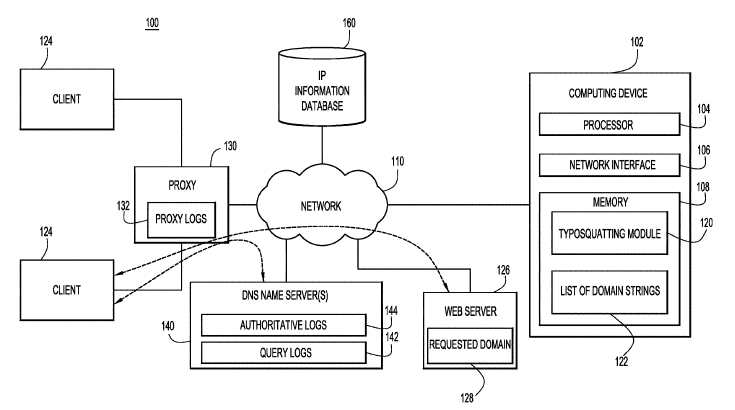

It can be used to test and compare domain names close to yours. This database holds all domains used on the internet. To find these domains, we can use a tool from ICANN (The Internet Corporation for Assigned Named and Numbers) called WHOIS. Domains that have a fraudulence possibility of over 75% are typically ones that you want to monitor. Two common identifiers of a fraudulent domain are the Levenshtein Distance, a calculation that assesses how close the name is to yours, and Fraudulence Possibility, an indicator that looks at the digital footprint when the domain was created and other domain information which may indicate a malicious intent. This is an easy way for malicious attackers to target your organization and potentially cause monetary and reputational harm. The attacker buys a domain name that closely resembles, such as, and sends a malicious email to your employees trying to get them to disclose credential information or pay fake invoices.

For example, a company name “Example” has an email address of. Many phishing attempts come from emails that look legitimate in an attempt to defraud recipients – a tactic commonly referred to as typosquatting. These domains are often used in phishing attacks, which according to CSO Online, account for more than 80% of all reported security incidents. GRF Cybersecurity Risk Assessment and Scorecard Blog Seriesįraudulent domains look very similar to your organization’s domain name and are used to fool people into thinking they are interacting with you.

Not only does this provide an extra layer of web filtering, but you also get alerted anytime a user mistypes a URL and is redirected to a proper domain. So, it's a good idea to host your domain with such ISPs. Some ISPs offer typosquatting protection as part of their product offering. This could indicate that your users are being redirected to a fake website. You can also set up an alert for any time there's a sudden decrease in visitors from a specific region. Keeping a close eye on your site traffic is also an effective way of spotting a typosquatting attack.
#TYPOSQUATTING EXAMPLES SERIES#
You can use dnstwist through a series of shell commands on Linux systems, but if you're in a hurry, you can try it in your web browser by heading over to. Generate Revenue: Fake website owners may put up advertisements or popups to generate advertising revenue from unaware visitors.Īn open-source tool like dnstwist can automatically scan your website domain to determine if there's already a typosquatting attack in progress or waiting to happen. Surveys and Giveaways: The fake website provides visitors with a feedback form or a survey aimed at stealing sensitive information. Listing: A typosquatter may direct traffic meant for the real site to its competitors, charging them on a pay-per-click basis. Joke site: Some typosquatters create a website to make fun of the mimicked trademark or brand name. Imitators: Some typosquatters use scam websites to conduct phishing attacks on their victims.ĭomain parking: Sometimes, the typosquatted domain owner may attempt to sell the domain to the victim at an unreasonable price. While they get the payment info from the users, no items are sent out to them.
#TYPOSQUATTING EXAMPLES INSTALL#
Creating Malicious Websites: Some cybercriminals use typosquatting to develop malicious websites that install malware, ransomware (such as WannaCry), phish personal information, or steal credit card data.īait and Switch: Typosquatters create fake websites to sell items that users are supposed to purchase at the correct URL.


 0 kommentar(er)
0 kommentar(er)
